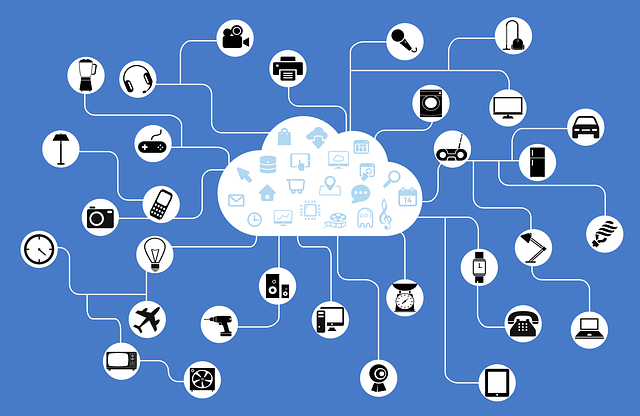Harnessing IoT Technology for Stolen Vehicle Recovery

The battle between car thieves and those committed to preventing vehicle theft is an ongoing struggle. Every day in the UK, an average of 159 cars are stolen, and the culprits are often professional gangs of thieves. This figure represents a 20% increase from the previous year in 2022.
In this high-stakes game, the role of technology in tracking down and recovering stolen vehicles has become increasingly critical for police and investigation teams. While established tracking technologies such as GPS have been widely used to combat this, they are not without limitations, and can often be thwarted by savvy criminals. Gareth Mitchell, UK Partner Manager, Heliot Europe, discusses the role of Sigfox’s sub-gigahertz (OG-Wan) radio technology in providing a discreet, robust, and effective solution for stolen vehicle recovery across Europe.
The Challenges of Modern Car Theft
The audacity of car thieves is not to be underestimated. They have a keen sense of which vehicles are parked in garages, where they are located, and when is the best time to strike. In a matter of minutes, a thief can pick a lock and short-circuit the ignition, making off with the stolen vehicle without leaving a trace. And with the recent adoption of proximity sensor keys among new car models, duplicate keys can be easily programmed using inexpensive software, and a car can be stolen in less than five minutes. Trucks, trailers, and construction site equipment, such as excavators and power generators, are also prime targets for these organised gangs, with this criminal activity costing the construction industry around £800 million annually.
According to the Office of National Statistics (ONS), 130,389 vehicles were stolen in 2022 alone, highlighting the scale of the problem in the UK. Once stolen, thieves often move the goods rapidly, and often across international borders, which makes timing critical when responding to this criminal activity. This is where investigation teams and police forces come into play, to locate and secure the stolen vehicles before they reach international borders, where they are often broken into parts to pass through border controls more easily.
The Evolution of Tracking Technology
Commonly known systems such as GPS tracking, LTE, WiFi, GSM-R, and passive tracking have been in use for some time among investigation teams and police to aid in the recovery of stolen vehicles. These systems offer various advantages but also have their limitations. A relatively new alternative, Sigfox’s Low Power Wide Area Network (LPWAN) technology, is gaining attention for its efficacy in stolen vehicle recovery.
Unlike GPS and WiFi signals that thieves are familiar with, Sigfox’s LPWAN radio signals remain undetectable and are less susceptible to interference. Professional car thieves have access to devices that can quickly detect and disable GPS, LTE, and WiFi signals using jammers. Such jamming equipment is readily available, and is relatively inexpensive. In contrast, OG-WAN based sub-gigahertz technology is more robust, transmitting signals reliably and conserving energy at the same time. This resilience stems from the unique properties of LPWAN technology, which allows the transmission of small data packets over vast distances with minimal interference securely.
Undetectable and Energy-Efficient
One crucial aspect of stolen vehicle recovery is the ability of tracking systems to remain undetected by thieves. These criminals often find and deactivate transmitters placed in conspicuous locations within vehicles, such as the glove compartment or fuse box. Traditional tracking technologies, including GPS, have a disadvantage in this application due to their comparatively high energy consumption. They require a power source for continuous operation and are usually limited to easily accessible installation points, which thieves are well aware of.
In contrast, OG-Wan radio technology is comparatively more compact, and its low-energy transmitters can operate for up to four years without maintenance, without needing an additional power source from the vehicle’s battery. This feature allows for installation in hidden and less accessible areas of the vehicle, such as cavities in the vehicle underbody or within the engine compartment, which the thieves are unable to detect, resulting in the faster recovery of the vehicle.
Wide-Spanning Network Coverage
The Sigfox network is available almost nationwide in many European countries, including the DACH region, France, Spain, Portugal, Italy, the Czech Republic, Croatia, and the Baltic States. Sigfox is continuously expanding its network, even into Eastern European countries like Poland, Romania, and Hungary. One notable initiative includes the expansion of the Sigfox network along the Trans-European Rail Corridor. Sigfox’s recent acquisition of network operations in Denmark and the UK further enhances network expansion, making it an attractive choice for international stolen vehicle tracking for investigation teams across the continent.
The frequency range in which Sigfox operates, 868 MHz, enables signals to cover distances up to around 30 miles. This wide reach is particularly beneficial in rural areas where the standard mobile network’s expansion is often limited. Furthermore, the radio signals are capable of penetrating materials like concrete ceilings and steel, making them highly effective in challenging environments. This makes it possible to track a stolen car across international borders, even in the event that the thieves have taken precautions to disable any tracking devices in the car itself.
Multi-Layered Security
In the realm of stolen vehicle recovery, diversifying tracking technologies is key. It is recommended to rely on multiple technologies, since thieves adapt quickly and find ways to circumvent them. Sigfox’s radio technology and LPWAN stands out as a valuable addition to the arsenal of tracking systems. It excels precisely where thieves feel most secure, making it a particularly intriguing technology for the investigation and insurance industry.
Conclusion
The battle against car theft continues to evolve and is on the rise, with criminals becoming increasingly sophisticated in their methods. However, as technology progresses, investigators and the police are becoming better equipped to locate and recover stolen vehicles.
Sub-gigahertz radio technology offers a discreet and robust solution for tracking stolen vehicles, allowing investigation teams to operate effectively in this high-stakes game. With the Sigfox network’s extensive coverage and resilience, stolen vehicles can be located even in remote locations and across international borders. As car thieves adapt, the multi-layered security approach that incorporates Sigfox technology proves to be a vital tool in the fight against vehicle theft. With the right technology and tools, it is possible to retrieve stolen cars more effectively, providing car owners, leasing companies, and insurance firms with a better chance of recovering their prized possessions.
